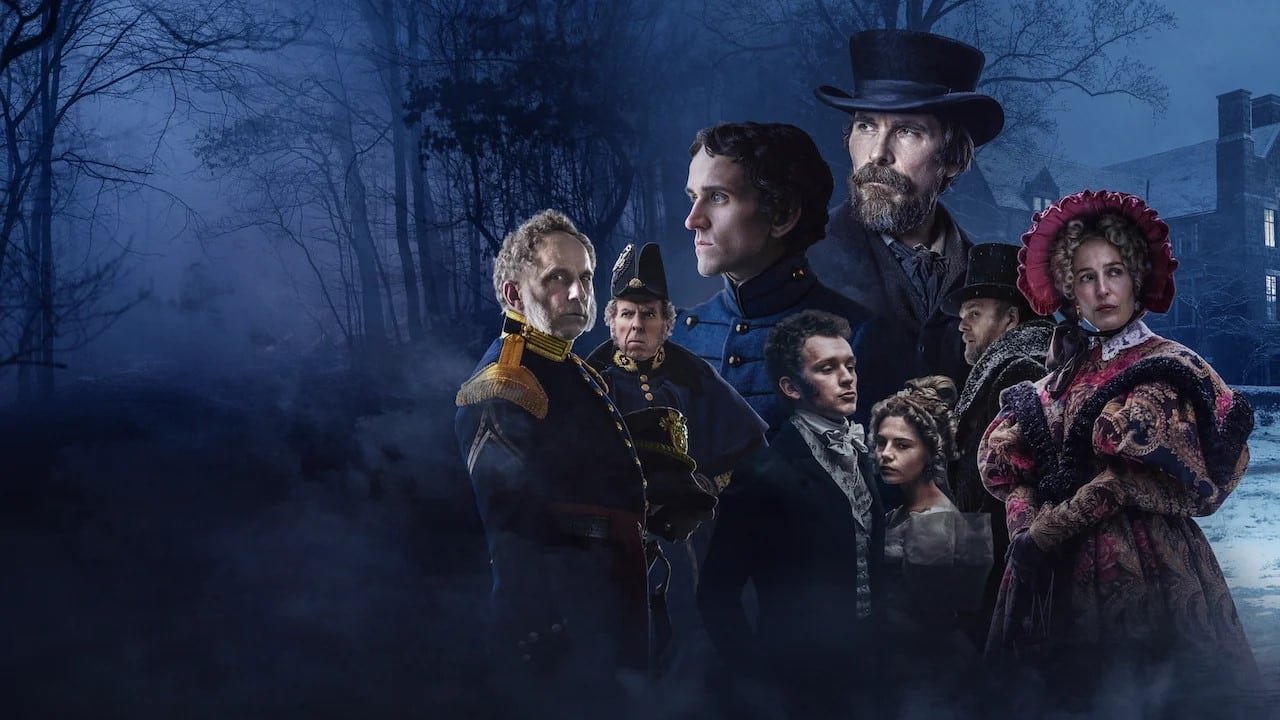The Pale Blue Eye
NETFLIXIf any contemporary director could be best described as hit or miss, it be would that of actor-turned-director Scott Cooper. Directing stellar pieces of academy award-winning cinema with the likes of Crazy Heart, giving new life to worn-out performers with Johnny Depp in Black Mass, showcasing a masterpiece of performance with Christian Bale in the criminally under-seen and underrated Hostiles. Yet on the other side, Cooper churns out incredibly average and often lifeless features such as Out of the Furnace and Antlers, so The Pale Blue Eye offers a very intriguing notion of which classification it fits into with Cooper’s filmography.
Starting with the positives: The Pale Blue Eye has a terrific ghoulish aesthetic – almost Tim Burton’s Sleepy Hollow inspired. It looks, at times, incredible with terrific atmospheric tension and presence when the story begins to find its feet. It’s morbid, white, and almost innocent until the leaves and fall and drops of blood begin to paint a different picture, elements that wonderfully echo and subconsciously speak on the setting and characters within this tale. The production design should be acknowledged equally for its claustrophobic and hidden details, as should the costume design. These events aside, Cooper’s film is almost a disaster, and it’s almost painful to state such as this has everything going for it.
For starters, this is Christian Bale’s third time with Cooper, and yet nothing on screen is here for Bale to fulfil or accentuate. It is a lifeless part, which is ultimately consciously crafted as such, alas it is a reading between the lines and a last-minute re-contextualisation of a character in the final five or so minutes that adds texture and thought, but it comes far little too late to care and generate interest. Much of the cast is wasted, if not all, bar Harry Melling, who gets to truly run loose and strut his stuff with some good acting chops and likeability but perhaps gets even a little too lost for the majority of characters to find interest in such a complex and multifaceted character. Timothy Spall, Gillian Anderson, and even Charlotte Gainsborough turn up here but have absolutely nothing to add of value or weight to proceedings to craft justify, tension, atmosphere, even the simplest of interest and engagement are horrifyingly absent. Toby Jones is arguably the only performance here with merit, but it's a skeleton of a character that Jones sleepwalks through with little interest in brooding or even being supplied for that matter.
The biggest travesty here, however, is how the narrative progresses and reveals. This is the feature's biggest stretch but ultimately the biggest weakness. Any mystery subconsciously by the viewer becomes engaging, it is a natural thing for humans to want to find closure, it is as simple as that, so for it to be naturally engaging is by no means a pass. Setting itself up as a murder mystery and then taking a darker sinister and satanic turn enriches this narrative, but by the time everyone begins to get wrapped up, the whole scenario just feels hollow and disengaging. Nothing here – be it story arcs or overall plot – has a level of engagement where the viewer is dying to see what is next. This is due partly to the screenplay but mostly is how the scenes of reveal and substance are composed and crafted. The scene blocking off mostly every sequence in that manner are crafted outside or inside, with one person looking stern and the other scared – rinse and repeat. This is what ultimately defines the feature as a whole. Reactionary sequences stagnate and ultimately strangle a feature that needs life.
How the narrative progresses, however, is another struggling issue. It feels almost as if the sequences themselves have been cut out, for pacing and the stitching gives off a feeling of almost an erratic nature. Clues are found and, out of nowhere, characters on screen formulate a result that directs eventual more reveals as if they are Sherlock Holmes reincarnated. It all just feels odd and diminishing with little authenticity of watching this on screen and feeling pressure and tension, resulting in a tighter engagement but these are nonexistent elements. That very pressure of time is then consciously brought up within the film itself to justify the stepping stones of sequences feeling rushed, and then all of it comes crashing down with the eventual reveals rushed to a point of characters just finding out the truth within thin air. Now even then this feels redundant and slack, but Cooper further accentuates this feature by adding in one more twist; a twist that, by its very nature, re-contextualises the whole feature and characters alike. Or more so what the intention of including said twist would do, because in this case, it actually reveals the stubborn and underwritten value of Cooper's work here, because the script and performances are nowhere near smarter than they think they are, with said reveals just highlighting the underwhelming nature of it all and while trying to land one final emotional blow to its audience ultimately undermines the whole experience.
It’s quite sad that the end result of The Pale Blue Eye has all the ingredients to be something not only special but at least in layman's terms: good. An Academy Award-winning actor and director, and an ensemble cast, it is quite shocking how far they might have fallen. The end result is a rushed, bloated and underwhelming two-hour murder mystery with very little murder and even less mystery. Even the small addition of score is absent, such a vital and integral attribute of any murder mystery in ghoulish 19th century New York. These are cinematic attributes here that have been seen and observed in previous Cooper exploits, and to not even see the very basics of these formulas on screen is not only disappointing but, quite frankly, disastrous.


